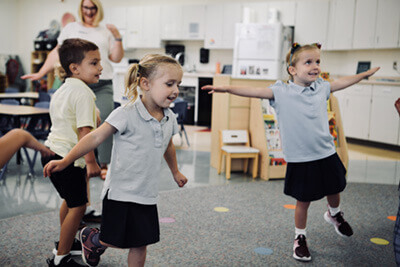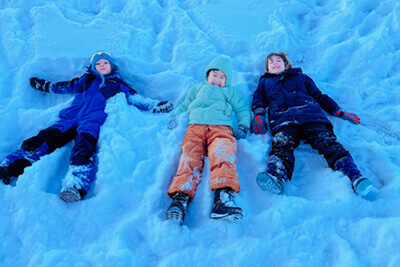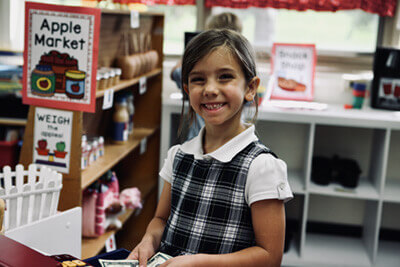January 2, 2025
 When parents are just beginning to explore early childhood and kindergarten programs for their children, many questions are at the forefront of their minds. Will their child be safe and nurtured but also challenged? At MPA, the answer would be ‘yes’ to these questions. However, parents also question what institutes the proper amount of academic rigor for five to six-year-olds and ask what this rigor should look like in kindergarten.
When parents are just beginning to explore early childhood and kindergarten programs for their children, many questions are at the forefront of their minds. Will their child be safe and nurtured but also challenged? At MPA, the answer would be ‘yes’ to these questions. However, parents also question what institutes the proper amount of academic rigor for five to six-year-olds and ask what this rigor should look like in kindergarten.
Mounds Park Academy, one of the top two private schools in Minnesota and one of the nation’s top STEM schools, serves students PreK through 12th grade and features both a PreK and a kindergarten program that deeply believes that play is, in fact, one of the most important components of a successful early childhood and kindergarten program.
Benefits of Play in Child Development
In Suzanne Bouffard’s book “The Most Important Year,” she discusses best practices for the earliest years of school. She explains that successful early childhood programs follow the research, which states “very clearly that children learn through play and this notion that you have to choose between play and academic learning is a false dichotomy.” She writes, “One study showed that you can give children building blocks and let them build whatever they want. Or you can give children building blocks with a goal–to build a landing pad for a helicopter, for example. In both cases, everybody ends up having fun and learning something, but the kids who had a goal actually used richer vocabulary, especially around spatial skills and building concepts.”
Learning skills such as taking turns, being a friend, showing emotional control, problem-solving, and sharing are some of the rigorous aspects of early education and MPA’s kindergarten curriculum. Without these pivotal social and emotional concepts, kindergarten teacher Ms. Petersen explains, “a child will not be able to handle academic rigor successfully later in their schooling journey.”

The Power of Play
Dr. Michael Yogman, a pediatrician, researcher, author, and professor at Harvard, states in the article “The Power of Play: A Pediatric Role in Enhancing Development in Young Children” that, as a society, there is an increased focus on academic readiness which has “led to a focus on structured activities that are designed to promote academic results as early as preschool, with a corresponding decrease in playful learning. Social skills, part of playful learning, enable children to listen to directions, pay attention, solve disputes with words, and focus on tasks without constant supervision.
By contrast, a recent trial of an early mathematics intervention in preschool showed almost no gains in math achievement in later elementary school,” he goes on to explain that “The AAP report on school readiness includes an emphasis on the importance of whole child readiness (including social-emotional, attentional, and cognitive skills). Without that emphasis, children’s ability to pay attention and behave appropriately in the classroom is disadvantaged.”
What Defines Play?
Defining what constitutes ‘play’ can be tricky in an academic setting. However, Yogman states it is “an activity that is intrinsically motivated, entails active engagement, and results in joyful discovery. Play is voluntary and often has no extrinsic goals; it is fun and often spontaneous. Children are often seen actively engaged in and passionately engrossed in play; this builds executive functioning skills and contributes to school readiness.”
At MPA, our preschool and kindergarten teachers fully embrace play and incorporate it into our student’s everyday experiences. If you were to walk into Ms. Petersen’s kindergarten classroom, you would feel an immense amount of joy permeating from the children. They would be sitting on the ground designing and building box mazes with fourth graders, baking apple pie while discussing the parts of the fruit and measurements of flour, all the while taking turns adding ingredients, or they would be drawing their own interpretation of a book they read together as a class. All of these practices have ‘play’ in common. Every student is learning while actively participating and working together while delving into playful, experiential learning. When students can fully engage in their own learning, the foundation for academic success is built.

Play for Emotional Health and Well-being
The other incredibly important aspect of ‘play’ is its direct correlation to children’s stress levels. Yogman writes that “play and stress are closely linked. High amounts of play are associated with low levels of cortisol, suggesting that play reduces stress…play, especially when accompanied by nurturing caregiving, may indirectly affect brain functioning by modulating or buffering adversity and by reducing toxic stress to levels that are more compatible with coping and resilience.” These skills, regulating emotions and showing resilience, are directly related to academic success. In not only our kindergarten classes but every Lower School grade, there is not a single day where these skills are not actively addressed. They are taught through play, through hands-on, meaningful lessons that naturally lower children’s stress and make learning a happy, joyful environment for years to come.
MPA’s dedication to implementing research-backed educational approaches marks our importance on physical play and experiential learning. As our kindergarten teacher said, in order to be successful later on, children need the tools, flexibility, and important social interactions that come only through play and a hands-on learning environment. MPA provides these experiences for our students and excels at them while continuing our dedication to research and incorporating joyful play into our successful curricula.